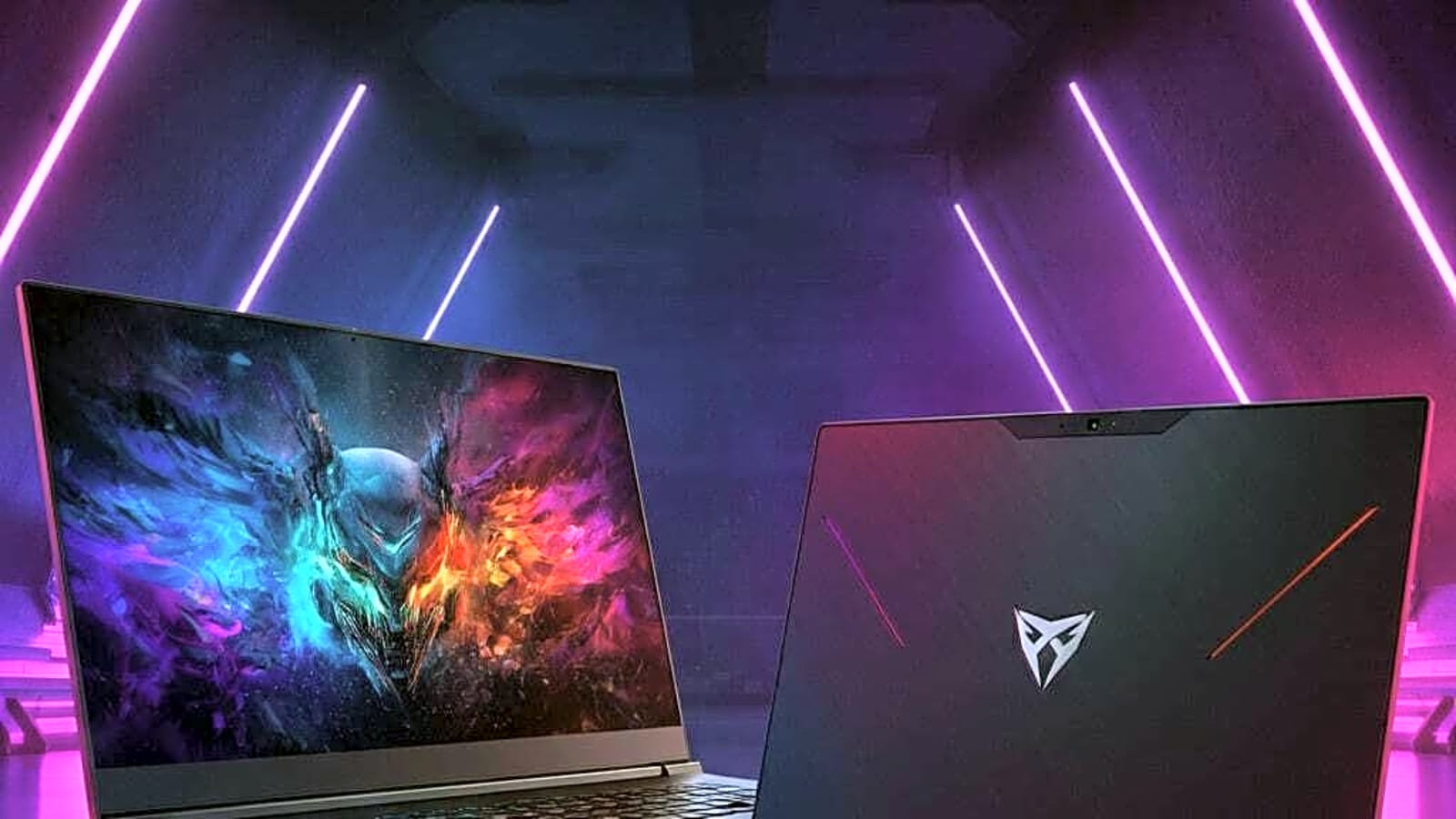
Two gaming laptops, both from MSI, both packing enough power to make Crysis cower in fear. But which should you choose? The MSI Raider 18 says, “Hey, I’m a tank that eats benchmarks for breakfast,” while the MSI Crosshair 16 waves a slightly smaller flag with its “I’m sleek, solid, and won’t leave your wallet weeping (well, not as much).”
To help you figure out the better gaming laptop for your needs, we’re pitting these machines against each other on the battlefield of specs, features, and pure gaming madness.
Design and Build Quality
MSI Raider 18
If you’ve been doubling your gym sessions, the Raider 18 is happy to do its part in your training with its 7.94-pound heft. At an absurd 18 inches, it’s not pretending to be portable with its chunky black plastic build and sharp red accents. Functionality is there, but it screams “gaming beast” louder than most RGB rigs. No stealthy brunch café editing here; this thing’s built for LAN parties and desktop replacements.
MSI Crosshair 16
Meanwhile, the Crosshair 16 tries to strike a balance. It’s slimmer, lighter at only 2.5 kg (5.5 pounds), and adorned in a Cosmo Gray colorway that whispers, “I can be professional… but only if I have to.” It doesn’t quite demand to be lugged around like the Raider, and its cooling vents manage to look aggressive without screaming, “Behold, a gaming laptop!” Subtle, but still geek-chic.
Verdict: If you’re into size and raw presence, the Raider 18 wins, albeit like a linebacker that crushes both opponents and backpacks. For balance and style, the Crosshair 16 edges ahead.
Display Showdown
MSI Raider 18 brings an 18-inch Mini-LED display with a crispy 4K resolution (3840 x 2400) and an eye-popping contrast ratio. Need sharp visuals? It’s got 252 PPI, making it ridiculously smooth for text-heavy work. Blooming from the Mini-LEDs is its only major sin, as even its HDR support delivers visuals that’ll leave your jaw on the floor. Movies? Amazing. Games? Stunning. The catch? HDR disappears when it’s on battery power—which you’ll likely be leaning on for minutes (more on that later).
Meanwhile, the MSI Crosshair 16 rocks a cheerful 16-inch IPS panel at 2560 x 1600 with a buttery 240Hz refresh rate. It screams fast-paced action gaming but struggles when the included RTX 4060 falls slightly short of achieving refresh-rate-matching frames. Can it handle demanding visuals? With DLSS 3 tricks, it’ll hold its own, but it’s not touching Raider’s visual nirvana.
Verdict: For pure gaming, the Crosshair’s faster refresh rate appeals. But if you’re going big, you might as well go colossal, and the Raider’s 4K Mini-LED is impossible to ignore.
Performance Face-Off
Okay, here’s where these two really start throwing punches.
MSI Raider 18:
- Intel Core Ultra 9 285HX (24 cores)
- Nvidia RTX 5080 (175W TDP)
- 64GB DDR5 RAM and 4TB PCIe Gen 5 SSD
This thing is a nuclear missile disguised as a laptop. With RTX 5080 mobile graphics, it benchmarks like nobody’s business, crushing Shadow of the Tomb Raider at max settings with near-200FPS performance at 1080p. Want to set fire to the earth’s crust with workloads like video editing or AI-based LLM tests? The 13,000 MB/s read speeds from its SSDs say, “Hold my energy drink.”
MSI Crosshair 16:
- Intel Core i7-14700HX
- Nvidia RTX 4060 GPU
- 16GB DDR5 RAM and 1TB NVMe SSD
A step down in hardware but not exactly a slouch. The GPU needs some work to fully push its 240Hz refresh rate glory, but with frame generation, it punches above its weight. It keeps temps in check under pressure, though it’s far less future-proof than the almighty Raider.
Verdict: Performance-wise, the Raider’s monstrous power eclipses the Crosshair, but the latter can still comfortably game without taking a second mortgage.
Cooling and Noise
If you’re okay with fans channeling tornadoes, the Raider 18’s jet-engine-level noise in high-performance mode won’t bother you. It cools well but makes its presence known, demanding both space and headphones.
The Crosshair 16, on the other hand, offers excellent cooling that doesn’t steal focus, balancing power and stealth much better (well, stealth minus RGB lighting).
Verdict: Crosshair spares your eardrums, but the Raider trades those decibels for a lava-carrying cooling system.
Battery Life That Misses the Mark
Battery life is where both fail to impress. With a massive 99-watt-hour battery, the Raider manages 4-ish hours… while streaming 4K and sipping on power-saving profiles. The Crosshair isn’t breaking any endurance records either but outlasts its big brother by sheer virtue of consuming less raw energy.
Verdict: Neither is particularly portable in the battery life department. You’d better be close to a wall socket.
Keyboard, Trackpad, and Ports
The Raider’s SteelSeries keyboard and RGB-backlit glory are fine but underwhelming for a device of its caliber. The Crosshair’s keyboard breaks out translucent WASD keys for that gamer flair and squeezes a numpad despite feeling a bit… cramped.
When it comes to ports, both shine. The Raider’s dual Thunderbolt 5 completely outclasses the Crosshair’s best USB-C 3.2 Gen 2. You definitely won’t be cable-starved with either unit.
Verdict: Port-life dominance swings to the Raider, while the Crosshair defends its spot with gamer-centric tweaks.
Final Thoughts: Which MSI Gaming Laptop Reigns Supreme?
The MSI Raider 18 is for the “power at all costs” crowd. It’s bulky, loud, and built like a space heater with the performance of a desktop PC. But for $4,499, you probably knew that already.
The MSI Crosshair 16, at a more approachable ~$1,400, is tuned for pragmatic gamers. Smaller, cooler, and still fast enough for most AAA titles, it’s a worthy choice in a world where RTX 4060s still shine.
Choosing between the two largely hinges on whether you want “absolute performance overkill” (Raider) or “more bang for slightly less buck” (Crosshair). Either way, you’ll be gaming like a pro. Just don’t forget the noise-canceling headphones.
More must-reads:
- Kyle Busch suffers hard crash during NASCAR practice at Iowa
- Luka Doncic sends message to Lakers fans after signing new contract
- The 'NFL mascot names' quiz
Breaking News
Trending News
Customize Your Newsletter
 +
+
Get the latest news and rumors, customized to your favorite sports and teams. Emailed daily. Always free!








